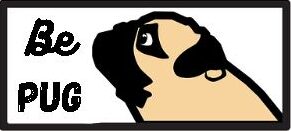Are Pugs Smelly Dogs? Let’s Talk About the Real Reasons

Disclosure: This post contains affiliate links. As an Amazon Associate, I earn from qualifying purchases—at no extra cost to you.
Pugs are adorable, affectionate little companions known for their wrinkly faces and big personalities. But along with all that charm, some pug owners find themselves dealing with unexpected odors. If you’ve noticed a strange smell coming from your pug, it’s probably not just your imagination.
Here’s a closer look at why pugs can sometimes smell a bit funky—and what you can do to help them stay fresh and clean.
Wrinkle Buildup Can Lead to Odor
Those deep facial folds that give pugs their signature look can also trap moisture, food, and bacteria. Without regular cleaning, those creases can develop a sour or yeasty smell.
According to feedback from pug owners in online forums, gently wiping between the wrinkles each day with a damp cloth or pet-safe wipe can prevent buildup. Just as important—make sure the folds stay dry afterward to avoid irritation.
Diet and Digestion Play a Role
Pugs are prone to digestive issues, which can lead to gassiness. Some owners report that switching to a limited-ingredient or grain-free food helped reduce flatulence. Others mention using slow-feed bowls to cut down on air swallowing, which can contribute to bloating.
If your pug has ongoing digestive problems that lead to unpleasant smells, it might be time to reevaluate their food ingredients or talk with your vet about potential allergies.
Yeast and Skin Infections Are Common in Pugs
Warm, moist skin folds can create the perfect environment for yeast to grow. Many pug parents note that when their dog starts smelling particularly “cheesy” or musty, it’s often due to a yeast infection—especially around the face, paws, or underbelly.
Regular bathing with vet-recommended shampoos and keeping their skin folds dry can help prevent these infections from returning. For stubborn cases, vets might prescribe a medicated treatment.
Smelly Ears and Bad Breath Shouldn’t Be Ignored
Another common source of odor? The ears. Pugs often have tightly folded ear canals, which can trap wax and debris. Regular ear cleaning can reduce the risk of infection and prevent that strong, unpleasant smell some owners describe.
As for bad breath, it’s usually tied to dental issues. Many pug owners use dental chews, brushing routines, or vet cleanings to keep their dog’s teeth and gums healthy.
Conclusion
So, are pugs smelly dogs? They can be—but it usually comes down to simple care routines and attention to a few sensitive areas. Wrinkles, ears, digestion, and dental hygiene all play a part in how your pug smells from day to day.
With regular grooming and the right diet, most pugs don’t have to be stinky. And when they do smell a little off, it’s often a sign they just need a little extra care.
Related Articles You Might Find Helpful
Want to learn more about pug care and hygiene? Check out these related articles for useful tips and insights.






